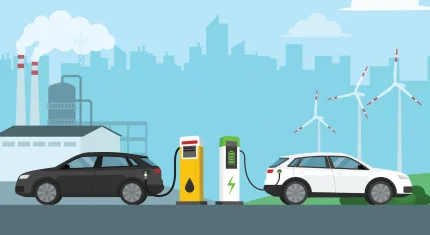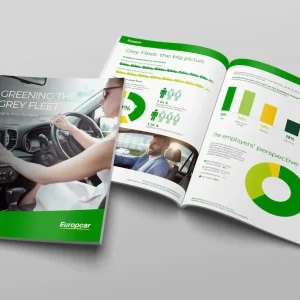
We have analysed lease lengths in detail previously, and the consensus was that longer contracts with lower mileages are generally the way to do it. Forget three years/60,000 miles, four-year leases (now very much the norm) at 20,000 miles a year often suit your average business car driver who, according to leasing giant Arval, now averages “just shy of 19,000 miles a year”. Vans tend to start at four years, but many are running to five and beyond.
Fair enough. Stick everything on four years, extend it if you have to, and leave it at that. If only it were that simple.
The motor industry is amid what feels like a thicket that needs a good trim, but the shears have gone missing, and it is so overgrown that there is no obvious way through. Answers about what to buy, how best to manage it, and when to get rid of it for the best return on investment lay deep beneath the unkempt foliage.
EVs are the thorniest of the lot, because – as we have said before – the front-end perks do not align with the reality of selling them used.
“You’ve got your early adopters,” says Philip Nothard, insight director at Cox Automotive, “‘we’re going to be 30% EV by X, 50% Y…’ They felt some pain, because those vehicles now are coming back into the marketplace [after big drops in values].
“You then have another sector of the market that held back, but still has an ESG [environmental, social, and governance] priority. I’ve had numerous conversations with people saying, ‘I’ve got to start putting some EV products on the fleet, because we’re not meeting our ESG commitments. Do we start increasing our portfolio of EVs now? If we start putting them on now, then what contract term should we start to think about?’ Or ‘should we hold off a little bit longer?’”
Speaking in early 2023, industry veteran Karl Howkins told us: “If we were a 60% electric fleet because, 12 months ago, we decided we were going to write a load of long-term contracts, I’d be blooming nervous.”
Howkins was speaking in his former role as MD of short-term leasing firm Sogo, and has since joined software firm Tomorrow’s Journey, but the statement rings true today. Used EV values are generally now much closer to those of petrols and diesels, but the market is still developing, and it is tricky to pinpoint where it is heading. However, assuming the goalposts of 2035 remain in place for the new car ICE cut-off, values of internal combustion models are only likely to go one way, at least with the next leasing cycle.
“Are you better off putting your EVs out on a short-term contract and managing that early exposure and risk, and putting your ICE vehicles on long contracts, so you have them coming back to the marketplace when ICE vehicles will be in increasingly high demand and short supply?” asks Nothard.
Two-to-four-year-old petrol cars sold by Manheim Auctions in April 2024 retained 57% of cost new, hybrids 54%, diesels 53%, plug-in hybrids 49%, and EVs 38%.
Equivalent figures for four-to-six-year-old models show petrols at 45%, hybrids at 43%, diesels and plug-in hybrids level-pegging at 39%, and EVs down at 27%.
It is worth remembering the rate at which EVs have joined the new car market since the start of the decade and how quickly they have expanded from niche, expensive products to today’s wider product range. There are far more of the former on the used car market, which – coupled with their broader price drops over the past (almost) two years – explains why their RVs look that much worse. Nonetheless, conclusions can be drawn from the data, at least for those defleeting relatively soon.
“If you take this purely as raw data, you’re better off dropping your diesels into the market early, because you’re going to get 14% better value at two to four years than you would at four-to-six,” says Nothard.
“With EVs, if you let those run for a bit longer, then you get another 11% hit. Looking at that complex lifecycle, you would say your petrol and diesel is better off in the market at two-to-four years, and you could let your EV product run on a little bit longer.”
Irrespective of fuel type, fleets that find themselves in the unlikely position of being able to offload younger cars now will likely do well, as Covid-era shutdowns and subsequent supply shortages have made sub-three-year-old models scarce and desirable.
“Everybody’s chasing two-year-old to three-year-old products, which is where we’re starting to see the strength,” explains Nothard, “what the leasing companies have really all got now is this four-year-old marketplace, which is where some of the weakness is.”
The new car market’s game of catch-up is still in session, and when you throw in the ZEV mandate and wavering EV demand, you are very much back in the middle of that overgrown thicket, which has led to a greater focus on older used cars. Dealers like them because they are more abundant than anything post-pandemic, everybody can get their head around/sell a second-hand petrol or diesel, and all the manufacturers adopting the agency model can keep their mitts off them, thank you very much.
That may not be the case forever, though. Main dealers have been shopping outside their core market (previously three-year-old/60,000-mile ex-fleet cars) for a long time, and OEMs are not blind to the potential of older models. BMW, for example, which plans to switch from a franchised to an agency model in 2026, has recently launched a ‘tier two’ approved used car programme, for models that were previously too old or lacked the service history/condition requirements for its conventional used approved scheme. Tesla, which has always operated a direct sales programme, reportedly introduced a certified pre-owned programme in June, covering models built from 2018 with up to 90,000 miles. If you wind up keeping vehicles on your fleet for longer than usual, do not be surprised if even the aged high-milers – the ones at which main dealers would previously have turned up their noses – find second homes on a branded forecourt. They might even be there already.
Kitted out? Covid-era vehicles lack key equipment
De-specced vehicles were yet another quirk of vehicle manufacturing in the immediate aftermath of the pandemic. Think back to when the semiconductor shortage was in full swing, and OEMs were forced to produce models without key bits of electrical equipment – anything from audio gear to ADAS systems. They have started to make their way onto the used car market and the Vehicle Remarketing Association (VRA) has flagged up the issue.
“Depending on the manufacturer and model, there are all kinds of items omitted – heated seats, head up displays, electric door mirrors, electric seats and more. Some cars were even built with analogue instrument clusters and clocks,” says Marcus Blakemore, chair of the VRA’s industry trends committee.
“We’re now in a phase where these cars are starting to… come onto the used market and are causing valuation issues.”
The biggest issue is that such vehicles are very tricky to identify. Semiconductor shortage or not, individual items of equipment often disappear into the ether when vehicles are sold. They are generally only identified by the trade and assigned a value when they are either very visible (e.g. alloy wheels, panoramic roof) or form part of an easily recognisable option pack with its own code.
That makes life even harder when odd bits of kit just are not there, as Blakemore explains: “There is generally agreement… that few items of equipment add much value to any used car. However, if there is equipment that buyers are expecting missing, it does make a vehicle more difficult to sell. For example, if you’re trying to retail a prestige car at three years old that doesn’t have heated seats, it’s probably going to stick around on your stock list for a while.”
Supported by:






